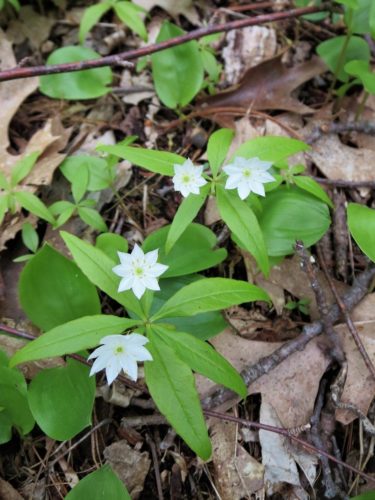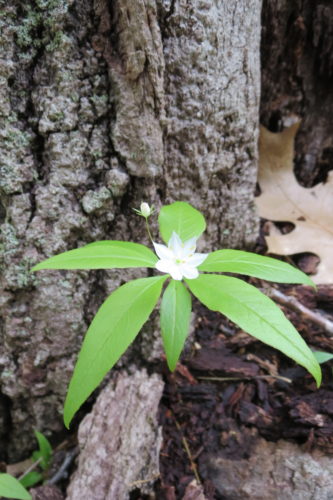
5/10/2021
This cute little plant is starflower. Though I’d seen it in the woods before and identified it, I’d never gotten around to writing about it. Then, earlier this month, I found it growing on my property, below one of our larger trees, and it seemed like the perfect subject for a SITY post.

The blossom of starflower is small, no bigger than a fingertip. The U.S. Forest Service says, “Many gardeners do not find starflower to be showy enough or to flower long enough for their tastes.” I can see their point. But, starflower grows in patches, making it more noticeable. It also has those beautiful leaves to set off the white of the flowers. Here it grows among Canada mayflower (another common white wildflower), but it bloomed slightly before the Canada mayflower this year, and presumably it will again in the future. That means there’s a window of time in which it could shine.
The Forest Service goes on to say, “If you are working in woodland shade garden it does add to the diversity of wildflowers in this type of naturalized planting.” I’m a big fan of diversity. I also like convenience, and what really makes me welcome starflower on my property is that it requires no special care. Once it’s well established, it’ll just keep going, all on its own. If I ever get around to making a landscaping plan for our plot, which is something I ought to do, then starflower will be included on my list of plants to propagate. Nature saw fit to plant it here, and it deserves its shot at landscape glory.

Does each plant grow two flowers?
According to an online source, each plant produces one or two flowers. That’s consistent with the photographic evidence. In the pics that I took, most of the plants have two flowers, but there are a few with only one flower each.